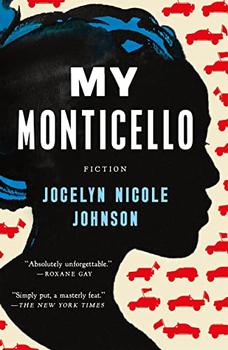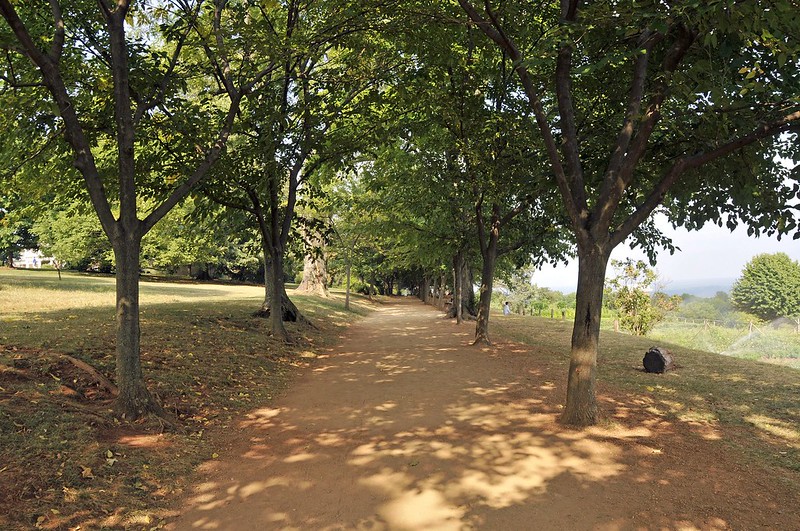Summary | Excerpt | Reading Guide | Reviews | Beyond the Book | Read-Alikes | Genres & Themes | Author Bio

Fiction
by Jocelyn Nicole JohnsonThis article relates to My Monticello
 In the novella that makes up the second half of My Monticello, survivors of a white nationalist uprising seek shelter at Thomas Jefferson's estate. Jefferson's former residence and plantation located just outside of Charlottesville, Virginia is a UNESCO World Heritage Site and currently operates as a museum dedicated to the third U.S. president by the Thomas Jefferson Foundation. However, Jefferson's legacy as a founding father is complicated by his history as a slaveholder, despite his referring to slavery as a "moral depravity" and crafting legislation banning the import of enslaved Africans to Virginia. It is believed that Jefferson was the father of six children with an enslaved woman named Sally Hemings, who lived with and labored for Jefferson all her life, beginning when she was 14 years old.
In the novella that makes up the second half of My Monticello, survivors of a white nationalist uprising seek shelter at Thomas Jefferson's estate. Jefferson's former residence and plantation located just outside of Charlottesville, Virginia is a UNESCO World Heritage Site and currently operates as a museum dedicated to the third U.S. president by the Thomas Jefferson Foundation. However, Jefferson's legacy as a founding father is complicated by his history as a slaveholder, despite his referring to slavery as a "moral depravity" and crafting legislation banning the import of enslaved Africans to Virginia. It is believed that Jefferson was the father of six children with an enslaved woman named Sally Hemings, who lived with and labored for Jefferson all her life, beginning when she was 14 years old.
Thomas Jefferson kept around 600 enslaved people over his lifetime, with about 100 living and working at Monticello at any given time. The property had four farms, a dairy, a textile factory and a cabinetmaking facility. Over a dozen enslaved people worked in the mansion serving Jefferson and his guests.
The Thomas Jefferson Foundation's first serious efforts to explore the legacy of slavery at Monticello came in 2012 with the launch of the exhibit "Slavery at Jefferson's Monticello: Paradox of Liberty" at the Smithsonian National Museum of African American History and Culture, which became the permanent exhibit "The Landscape of Slavery: Mulberry Row at Monticello" located on the actual plantation property. Mulberry Row is the name of the road on the plantation where the enslaved people working in Jefferson's house and in Monticello's manufacturing ventures lived. Visitors to Monticello can now tour the living quarters (referred to as the "Negro Quarter" with quotation marks on the museum's website) and work spaces on Mulberry Road, and a virtual version is available as well.
In 2018, Monticello launched another exhibit called "The Life of Sally Hemings," which features a recreation of Hemings' cabin and information about her life. The exhibit is fairly explicit about the nature of the relationship between Hemings and Jefferson, declaring, "Like countless enslaved women, Sally Hemings bore children fathered by her owner. Female slaves had no legal right to refuse unwanted sexual advances." Despite the fact that the exhibit does not definitively state that Jefferson raped Hemings, it caused controversy upon its opening, with some white Jefferson descendants and admirers taking issue with how the relationship is portrayed. One member of the Thomas Jefferson Heritage Society, a group that disputes the idea that Jefferson fathered Hemings' children, told the New York Times, "He just doesn't seem to be a person who would do this."
In My Monticello, protagonist Da'Naisha Love describes a visit her grandmother made to the museum to take part in a reunion of descendants. DNA evidence established a link between Jefferson and the Hemings descendants in 1998, and they were formally invited to a reunion in 1999. Since the 1990s, Monticello has hosted the Getting Word Oral History Project, which collects the stories of descendants of the enslaved population of the plantation.
Mulberry Row at Monticello, 2008. Photo by Tony Fischer (CC BY 2.0)
Filed under Places, Cultures & Identities
![]() This "beyond the book article" relates to My Monticello. It originally ran in October 2021 and has been updated for the
October 2022 paperback edition.
Go to magazine.
This "beyond the book article" relates to My Monticello. It originally ran in October 2021 and has been updated for the
October 2022 paperback edition.
Go to magazine.






Your guide toexceptional books
BookBrowse seeks out and recommends the best in contemporary fiction and nonfiction—books that not only engage and entertain but also deepen our understanding of ourselves and the world around us.